Pulished on Jul. 26, 2024
Stainless steel cutlery sets are an essential part of our daily dining experience. Their durability, resistance to corrosion, and aesthetic appeal make them a popular choice for households and restaurants alike. The diversity in stainless steel cutlery is not just limited to shapes and sizes but also extends to the various post-processing techniques that enhance their appearance, functionality, and market appeal. In this article, we will explore the diversity of stainless steel cutlery, the importance of post-processing, and delve into six key post-processing techniques that significantly impact the final product.
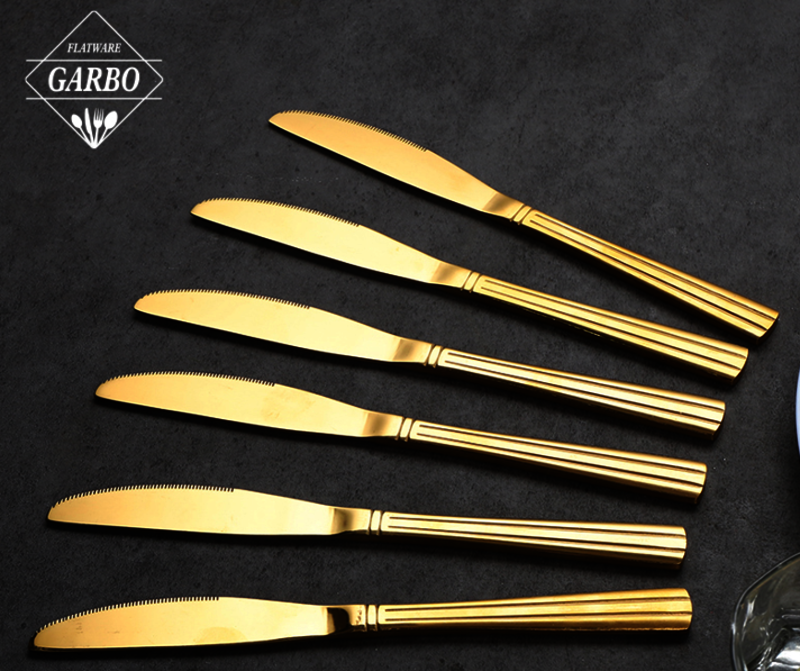
The stainless steel cutlery market is incredibly diverse, catering to a wide range of tastes, preferences, and cultural aesthetics. From the sleek, modern designs favored in Western countries to the intricate, ornate patterns preferred in Middle Eastern markets, stainless steel cutlery can be customized to suit any demand. This diversity is driven by the versatile nature of stainless steel itself, which can be manipulated and treated in numerous ways to produce various finishes and styles.
Market diversification is crucial for manufacturers as it allows them to tap into different consumer bases. For instance, while the Western market might prioritize minimalistic and functional designs, the Asian market may lean towards intricate and decorative patterns. Understanding these preferences enables manufacturers to apply the appropriate post-processing techniques to meet the specific needs of each market segment.
Post-processing is a critical phase in the manufacturing of stainless steel cutlery. It involves several techniques that enhance the visual appeal, durability, and usability of the cutlery. Here are six primary post-processing methods:
Vacuum Titanium Coating (PVD)
Gold Plating
Spray Painting
Sandblasting
Laser Engraving
Printing
Each of these techniques offers unique benefits and contributes to the overall diversity and functionality of stainless steel cutlery.
1. Vacuum Titanium Coating (PVD)
Physical Vapor Deposition (PVD) is a sophisticated coating process where titanium is vaporized in a vacuum and deposited onto the stainless steel cutlery. This method allows for the creation of a variety of colors, including gold, champagne gold, rose gold, iridescent, black, blue, and purple. The resulting finish is not only visually stunning but also highly durable and resistant to wear and corrosion. Importantly, PVD-coated cutlery can meet food-grade standards, ensuring it is safe for everyday use.
The versatility of PVD makes it an excellent choice for markets that value both aesthetics and durability. For instance, high-end restaurants and luxury households often prefer PVD-coated cutlery for its elegance and long-lasting finish.
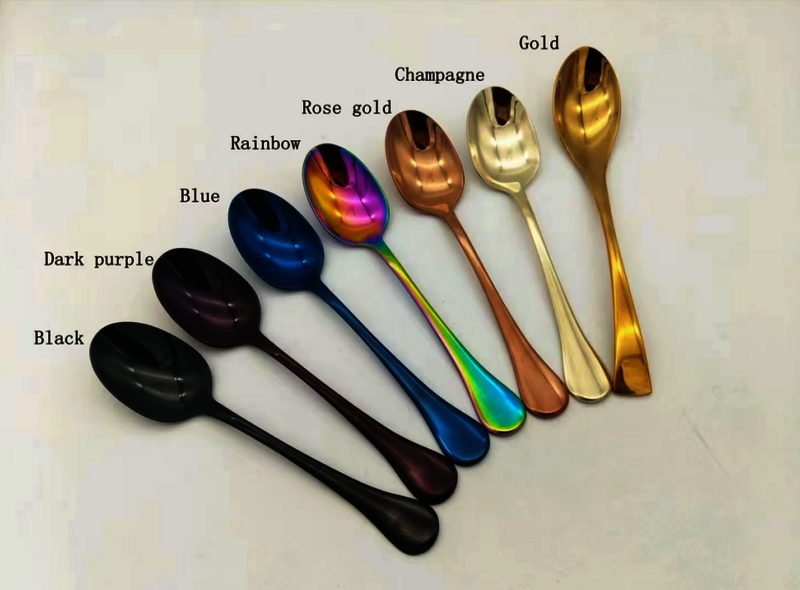
2. Gold Plating
Gold plating, also known as electroplating, involves immersing the cutlery in a solution and using an electric current to deposit a thin layer of gold onto the surface. This technique can be used to create partial golden patterns, adding a touch of sophistication and variety to the design. The intricate patterns achieved through water plating are particularly favored in Middle Eastern markets, where ornate designs are highly appreciated.
Gold-plated cutlery is both food-grade and dishwasher-safe, making it a practical choice for consumers who seek elegance without compromising on safety and convenience.
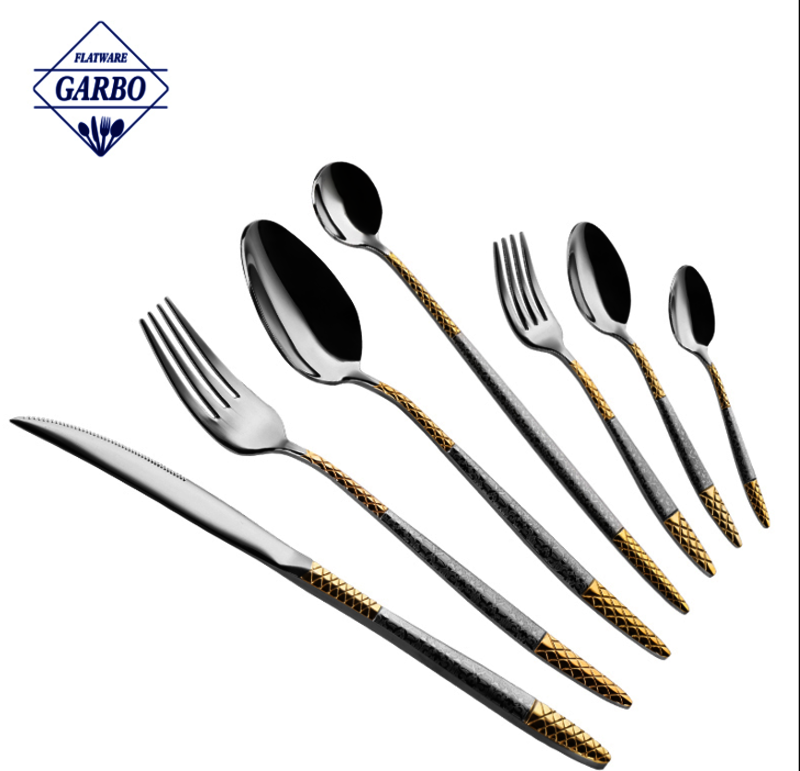
3. Spray Painting
Spray painting involves applying a layer of water-based, eco-friendly paint to the cutlery, usually on the handles. This method allows for a high degree of customization, as any desired color can be mixed according to specific color codes. Spray painting is particularly popular for creating vibrant and personalized designs, catering to markets that value individuality and creativity.
Food-grade spray paints ensure that the cutlery is safe for use, and the ability to customize colors makes this technique ideal for matching cutlery to specific themes or occasions.
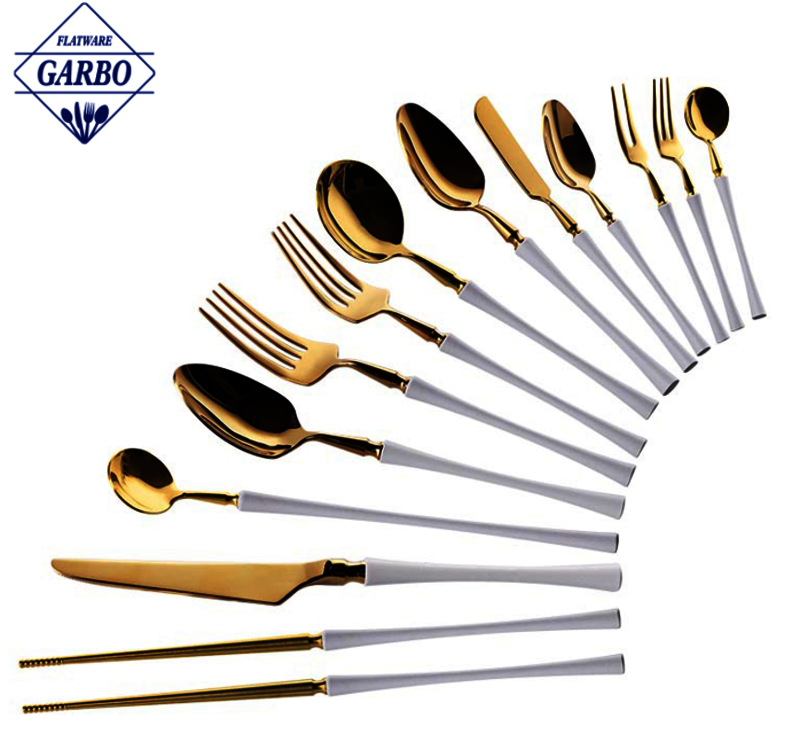
4. Sandblasting
Sandblasting is a physical process where abrasive materials are blasted onto the surface of the cutlery to create a matte finish. This technique is valued for its ability to produce a uniform, non-reflective surface that is both food-grade and dishwasher-safe. The matte finish achieved through sandblasting is often associated with a modern, understated aesthetic, making it popular in markets that favor minimalistic design.
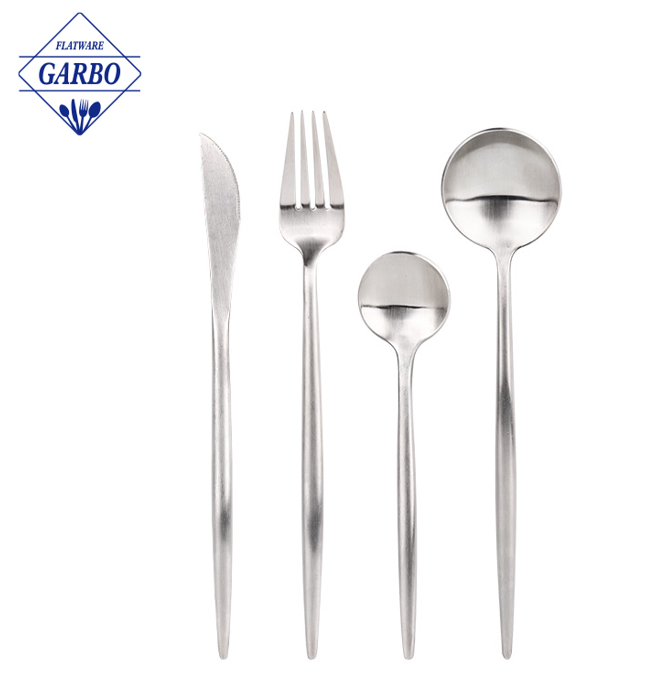
5. Laser Engraving
Laser engraving uses high-powered lasers to etch logos, patterns, or text directly onto the cutlery. This process offers precision and flexibility, allowing for intricate designs in both white and black options. Laser engraving is a preferred method for branding, as it ensures permanent, high-contrast markings that do not fade over time.
The ability to customize cutlery with logos or personalized designs makes laser engraving an attractive option for corporate gifts, promotional items, and bespoke tableware.
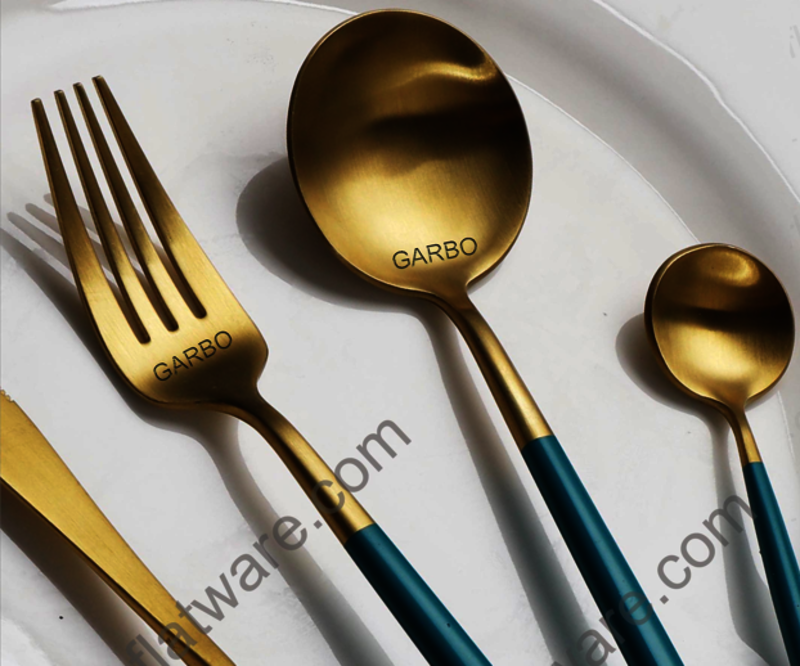
6. Printing
Printing involves transferring designs onto specific areas of the cutlery, enabling the creation of virtually any pattern or image. This technique is ideal for achieving detailed and colorful designs that can cater to a wide range of tastes and preferences. Printing allows for high levels of creativity and personalization, making it suitable for markets that value unique and visually striking cutlery.
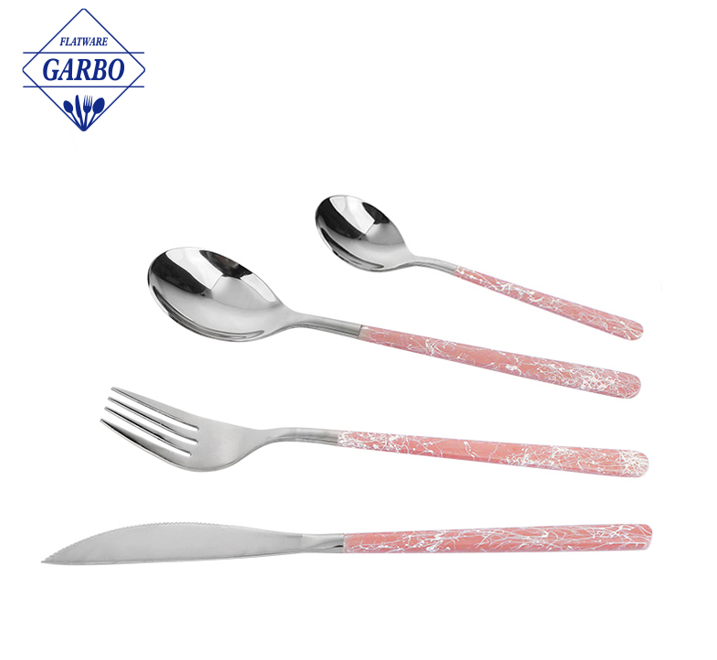
Impact of Post-Processing Techniques on Market Adaptability
The various post-processing techniques used in the production of stainless steel cutlery play a crucial role in ensuring that the final products meet the diverse needs of different markets. By employing these techniques, manufacturers can create a wide range of styles and finishes, from luxurious and ornate to modern and minimalistic. This adaptability is key to penetrating and thriving in different market segments.
For example, the Middle Eastern market's preference for ornate designs is well-served by water plating and intricate laser engraving, while the Western market's demand for sleek, modern cutlery is met through sandblasting and PVD coating. Customizable techniques like spray painting and printing allow manufacturers to offer personalized options that appeal to consumers seeking unique and bespoke products.
Looking for Flatware Supplier?
OEM&ODM RequestRequest for Quotation?
Get Factory PriceAny Confusion?
Speak With SalesmanWe deliver the quality and value your flatware needs, on time and within budget.
Contact UsODM&OEM Service
Our flatware is certified by leading retailers including Walmart, Tesco, Costco, Lidl, Target, and METRO, ensuring the highest quality standards.
Experience seamless service from design to export with our one-stop solutions. Our team simplifying your export process and allowing you to focus on growing your business.
Choose from a range of eco-friendly and customized packaging options to suit your specific needs. Our packaging solutions are designed to protect your products while reducing environmental impact.
Our efficient supply chain ensures timely delivery of your custom cutlery, minimizing lead times and keeping your business operations running smoothly.
Comprehensive support & satisfaction guaranteed.